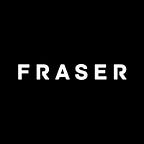The Power of Reactance in Advertising: How Pushing Back Can Pull Customers In
Have you ever asked yourself which hidden forces influence consumer behavior? And have you already discovered the answer to that question?
This issue of Nucleo will provide you with some enlightening insights on this very topic. We’ll unravel the layers of reactance in advertising and understand how it can either be a stumbling block or a stepping stone on the path to brand engagement. Join us as we uncover the psychological mechanisms at play.
“Why does a child sometimes do the opposite of what he is told? Why would a person sometimes dislike receiving a favor?” Brehm posed questions like these in 1966 and thus discovered the basis of a psychological phenomenon that’s called reactance. A phenomenon that most of us are probably familiar with, without knowing the details of the process behind it. Reactance is the visceral, sometimes irrational, pushback people experience when they feel their freedom is under threat. It’s the force behind those moments when someone rebels against well-meaning advice or resists persuasive messages.
Why this is relevant in a marketing newsletter?
Because on a daily basis, we write and send messages to convince people to do, buy, or believe something. As marketers, we need to craft persuasive messages and campaigns that engage, rather than alienate. Reactance, however, sets in when people feel that their freedom is being restricted by the actions of a brand. This knowledge is, therefore, another key to deciphering the complexity of consumer behavior.
Effective communication and persuasion depend on the art of messaging. This is particularly evident from two studies that highlight the role of message design and assertiveness in influencing our responses.
Forced vs. non-forced approach.
If you want to motivate fitness club members to do a specific exercise, your choice of words matters a lot. A study by Quick and Considine (2008) reveals that a forceful message like “you have to do it” boosts the perception of threat and thus reactance — i.e., anger and negative thoughts.
The result: You will not be as convincing as when you show possible options to raise awareness towards a product e.g., “Why not give it a try?”
Framing messages: loss vs. gain.
A study by Cho and Sands (2011) also shows that message framing takes over another important role. If a gain is promised, interest increases at the same time. Potential losses e.g., “If you don’t use sun protection, you’ll pay the costs”, again lead to a sense of threat. In this case, anger develops. Different messages trigger different emotional reactions.
Therefore, you should:
- Avoid Forceful Language: Overly assertive language can trigger resistance. Opt for a gentler tone when persuading.
- Choose Your Frames: Carefully consider whether to emphasize gains or losses. Tailor your message to your audience and context.
- Acknowledge Emotions: Be aware of emotional responses your message may elicit, particularly anger when a threat is perceived.
However, reactance can also be misused, as the (supposedly) deterrent images on cigarette packets show. Recent studies have shown that such images increase curiosity about smoking and awareness of tobacco products. A study by the RAND Corporation suggests that some adolescents react defensively to these images and downplay the health risks depicted.
So, the German government now chose a different approach in its stop-smoking campaign focusing on the message: “Take your chance”. This time, the Federal Government Commissioner for Addiction and Drugs wants to get smokers away from cigarettes with empathy and artistic illustrations.
The motto “PS. Talk to us. We’ll help you”, addresses reasons and occasions that tempt people to smoke. There is an understanding behind the temptation to smoke a cigarette rather than a criticism. This allows the government to extend a helping hand rather than point the finger of blame.
Reactance can make or break the success of a campaign. We consistently walk a fine line between the consumer’s desire for freedom and the persuasion efforts of us as advertisers. After all, the success of our advertising strategies stands and falls with our understanding of reactance. The advertising landscape is characterised by change, but one thing remains the same: the human element. It is up to us to adapt to the needs and desires of our target group. We can then understand the challenges of reactance, master other psychological factors, and develop appealing advertising campaigns.
One question for… Andy, our new Creative Director for FRASER in Zurich
With your international experience in various agencies around the world, what creative trends do you see as particularly promising for the future of the advertising industry, and how would you like to use them in your new role at FRASER?
I truly believe augmented reality (AR) in advertising is going to get much bigger. People will now have the ability to enrich their surroundings using their mobile devices and screens, which, in turn, presents exciting opportunities for brands and their products. AR will transform how brands tell their stories and showcase their products. It empowers consumers to actively engage with these stories, offering gamified experiences that will build deeper connections with the brand in the process.
Reading material: https://www.aerzteblatt.de/nachrichten/109290/Gesundheitsministerium-sieht-wenig-Nutzen-in-Schockfotos-auf-Tabakwaren
https://www.dw.com/de/schockbilder-spornen-teenager-zum-rauchen-an/a-41779786
https://www.ncbi.nlm.nih.gov/pmc/articles/PMC4675534/
https://www.horizont.net/marketing/nachrichten/anti-rauch-kampagne-das-ist-die-neue-r[…]kampagne-der-bundesregierung---ganz-ohne-schockbilder-203950
https://www.acrwebsite.org/volumes/6883/volumes/v16/NA-16
